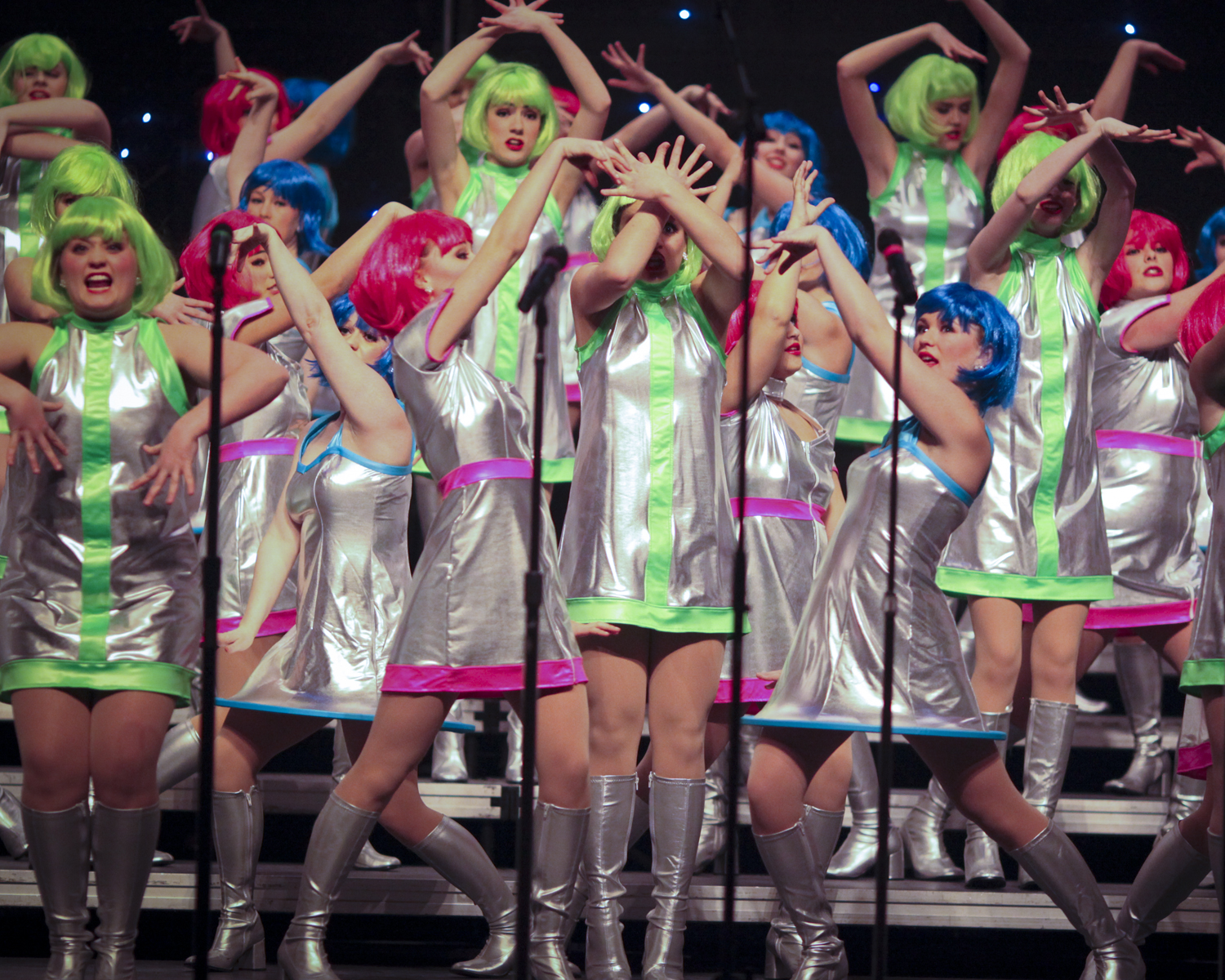
There are many options for perspiration control. The most obvious choice is selecting a deodorant that works with a student’s particular body chemistry. Additionally, they can use antiperspirant on other areas of their bodies to control excessive sweating.
For extra protection, they can use underarm perspiration control pads, which were a staple found in drug stores and department stores a few decades ago. Today, fabric versions and disposable pads are the ticket. Garment shields can keep performers fresh while preventing embarrassing underarm wetness, protecting fabrics from permanent stains, keeping underarm odors off the costumes, and saving on dry cleaning bills.
Another method for controlling perspiration in a costume would be to add a moisture-wicking lining to the garment itself. Perspiration can soak into this fabric, but not onto the outer fabrics.
Sheer mesh sleeves might be another suggestion for excessive sweating. Finally, camouflage is also something to consider. Solid fabrics will show perspiration much more than a printed fabric will. If In other words, if you or any of your show choir performers are prone to excessive sweating, become aware of the preventative measures for their costumes. Then, steps can be taken to minimize any unsightly stains so performers only draw attention to themselves for all the right reasons!
Protecting Show Choir Costumes Between Performances
It is best to keep control of show choir performers’ costumes by letting a trusted member of the booster organization be in charge. I have heard many horror stories of what can happen to a group’s costumes during the course of the competitive year. Costumes have burned up in a house fire, stolen out of a car, or well-meaning parents have burned a hole in a wrinkled costume by using an overly heated iron. Beverages or food have been spilled on costumes, zippers have become stuck-when yanked closed-have split apart, pieces have come off, and nearly every other imaginable complication.
Show choir costumes are left open to all these “threats” if individual performers store their own designated costume and bring it to each performance. If the costumes have many separate parts, those parts can be easily lost or left behind. If one person takes charge of the costumes each time, he or she can check that everything is accounted for, as well as regularly checking for issues of torn, ripped or wrinkled costumes in order to fix these issues before the next show.
Get the Wrinkles Out
What do you do when life throws you a wrinkle or two?
When show choir costumes get tossed and left on the floor, or balled up in a dance bag, wrinkles can easily happen.
There are many ways to remove wrinkles from performers’ costumes. First of all, when you find a wrinkled costume, hang it upimmediately. If you have days or weeks before you need it, the wrinkles may simply “hang out”; similarly, if you have the luxury to let them hang in a steam-filled bathroom (courtesy of a hot shower or two), the wrinkles may “hang out” upon completion of a few showers.
If this doesn’t work, or there simply isn’t time, take the costume to a dry-cleaner. If they are a full-service cleaner and have their steaming equipment on-site, with a trained technician, they might be able to “de-wrinkle” the costume on the spot. If not, maybe they can accommodate the request in a short time.
When Time is Short or Money is Tight
If there’s no time or money is tight, try a hand-held steamer or regular iron-but being incredibly careful. The key is to wait long enough for the water to get hot enough to steam, but avoid getting water droplets on the costume; instead, steam is what you need. Hold the shot of hot steam under
the costume, while it’s on a hanger or someone else is holding it, while being careful to avoid the hot steam of course.
Additionally, be wary because irons can sometimes surge in temperature, and an iron on “super-hot” mode can ruin a costume. Test the iron first on something that is not the costume, or protect the costume with a pressing cloth or a Teflon sheet, items that help diffuse the heat.
For many more tips on cleaning show choir costuming or keeping your show choir costumes fresh, visit http://www.satinstitches.com/blog and download the free e-book “Tips for Keeping Your Costume Fresh.”










